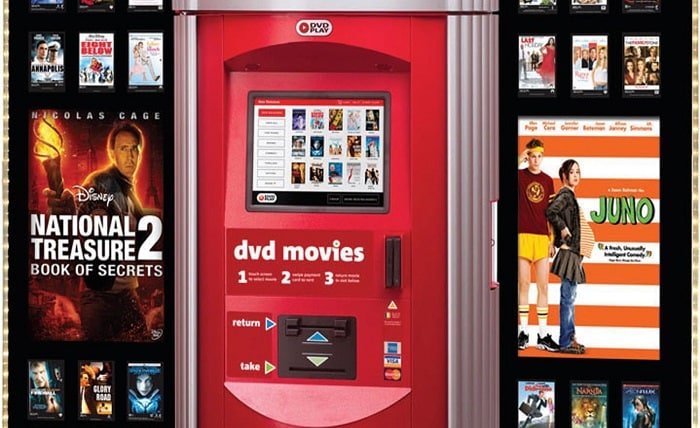DVDPlay: A Comprehensive Guide to and Maximizing Your DVD Experience

In an era where streaming services dominate entertainment consumption, the appeal of physical media like DVDs might seem to have diminished. However, there is still a significant demand for DVD players and related software, including DVDPlay, which allows users to play DVDs on their computers or other devices. This article will explore what DVDPlay is, how it works, and how you can optimize your experience with it. Whether you’re a DVD collector, someone who prefers physical media, or simply looking for a reliable way to play your DVDs on your computer, this post will provide all the information you need to get the most out of DVDPlay.
What Is DVDPlay?
dvdplay is a software application that enables users to play DVD movies and other DVD content on their computers. With the proliferation of Blu-ray players and streaming services, DVDs may seem outdated. However, DVDs still hold a special place in the hearts of movie buffs, collectors, and those with extensive DVD libraries. DVDPlay serves as an essential tool for those who wish to enjoy their DVDs on their PCs or laptops without the need for an external DVD player.
When you insert a DVD into your computer, DVDPlay recognizes the disc and automatically launches the DVD player interface. The software typically includes features like subtitle selection, audio options, and menu navigation, allowing users to replicate the traditional experience of watching a DVD on a TV screen. This makes DVDPlay an indispensable tool for anyone who still enjoys the charm of physical media.
How to Install DVDPlay on Your Device
Installing DVDPlay is a simple process that typically involves downloading the software and following a few on-screen instructions. Depending on your operating system (Windows or macOS), the installation process may differ slightly, but the overall steps remain relatively consistent. Here’s a breakdown of how to install DVDPlay on a Windows PC:
- Download the DVDPlay Installer: First, visit the official website of DVDPlay or a trusted software distribution platform to download the installer. Ensure that you’re downloading the correct version for your system.
- Run the Installer: After downloading, open the installer file. You may be prompted to give permission for the installation process to proceed, especially on Windows systems.
- Follow On-Screen Instructions: The installation wizard will guide you through the setup process. You will likely need to choose the installation directory and agree to the terms and conditions.
- Launch the Program: Once the installation is complete, open DVDPlay. You may be prompted to configure some basic settings before you begin using the software.
For macOS, the installation process is similarly straightforward. You’ll download a .dmg file, open it, and drag the DVDPlay icon into the Applications folder.
Once installed, you can start using DVDPlay to enjoy DVDs on your computer. Insert your DVD into the drive, and the software should automatically detect it, enabling you to start watching.
Features of DVDPlay That Enhance Your Experience
One of the key reasons DVDPlay remains a popular option for those who love physical media is its feature set. Unlike many generic DVD-playing programs, DVDPlay offers several unique features that enhance the viewing experience. Here are some of the most notable features:
1. High-Quality Video Playback
DVDPlay supports high-definition DVD video playback, ensuring that you get crisp, clear images when watching your favorite DVDs. Even though DVDs don’t offer the same resolution as Blu-ray or 4K formats, the software uses advanced video processing to optimize the picture quality.
2. Audio Options
Whether you’re watching a movie in its original language or prefer to use subtitles, DVDPlay gives you several audio options. You can select the desired language track, adjust the volume, and toggle audio effects, such as surround sound, to suit your setup.
3. Subtitle and Language Support
Many DVDs offer multiple subtitle and language options, and DVDPlay makes it easy to navigate these features. You can select subtitles in your preferred language, or turn them off entirely if you want to focus solely on the audio. This makes DVDPlay a versatile tool for international movie collections.
4. DVD Menu Navigation
DVDPlay mimics the functionality of a standalone DVD player. You can navigate DVD menus just as you would on a traditional DVD player, giving you the flexibility to access bonus features, chapters, and special editions of your DVDs.
5. Compatibility with Various Formats
In addition to regular DVDs, DVDPlay is often compatible with a range of DVD formats, including dual-layer DVDs, VCDs, and some Blu-ray discs. This ensures that the software can accommodate most DVDs you might own.
6. User-Friendly Interface
The interface of DVDPlay is designed to be intuitive, even for beginners. With simple, easy-to-understand controls, you can quickly adjust settings, pause, play, or skip scenes without feeling overwhelmed.
These features combine to make DVDPlay a powerful tool for anyone who wants to get the most out of their DVD collection while using a computer.
Troubleshooting Common DVDPlay Issues
While DVDPlay is generally a reliable and user-friendly application, there may be times when users encounter issues. Here are some common problems and solutions to help ensure a smooth DVD viewing experience:
1. DVD Not Detected
If DVDPlay doesn’t recognize your inserted DVD, the issue could be with your computer’s hardware or the DVD itself. Here are some things to try:
- Check the DVD Drive: Ensure your computer’s DVD drive is functioning correctly. Try inserting a different DVD to see if the issue persists.
- Update Drivers: Make sure that your DVD drive drivers are up to date, as outdated drivers may cause compatibility issues with DVDPlay.
- Try Another DVD: If the problem occurs with a single DVD, it may be damaged or scratched. Try playing a different DVD to verify the issue.
2. No Sound
If you’re experiencing issues with audio, consider the following steps:
- Check Volume Levels: Make sure your computer’s audio isn’t muted or too low.
- Check Audio Settings: Review DVDPlay’s audio settings to ensure the correct audio track and language are selected.
- Update Audio Drivers: Outdated audio drivers can cause issues with playback. Update them via your computer’s device manager.
3. Playback Stuttering or Lagging
If you experience stuttering or lagging during playback, this could be related to system performance or DVD quality:
- Close Unnecessary Programs: Free up system resources by closing other applications while using DVDPlay.
- Check System Requirements: Make sure your computer meets the minimum requirements for running DVDPlay smoothly.
- Clean the DVD: A dirty or scratched DVD may cause performance issues. Use a microfiber cloth to clean the disc before inserting it again.
By following these troubleshooting steps, you can resolve most common issues with DVDPlay and get back to enjoying your DVD collection.
DVDPlay vs. Other DVD Players: What Sets It Apart?
There are several alternatives to DVDPlay available in the market, each with its own features and capabilities. However, DVDPlay stands out for its specific focus on delivering a seamless, high-quality DVD experience. Let’s compare DVDPlay to other popular DVD software programs:
1. Windows Media Player
While Windows Media Player supports DVD playback, it lacks many of the specialized features found in DVDPlay, such as advanced subtitle controls, DVD menu navigation, and enhanced video quality.
2. VLC Media Player
VLC Media Player is a popular choice for many users, but it’s a more general-purpose media player. While it supports DVDs, its interface isn’t as tailored for DVD playback, and it lacks the intuitive features designed specifically for DVDs that DVDPlay offers.
3. PowerDVD
PowerDVD is another premium DVD player software that competes with DVDPlay. However, it is often seen as more focused on Blu-ray and 4K media playback. DVDPlay, by contrast, specializes in providing the best possible experience for DVD users, making it a more suitable option for those with large DVD collections.
4. CyberLink DVD Player
CyberLink DVD Player offers a similar feature set to DVDPlay, but it is often considered more expensive and may require additional setup or configuration. DVDPlay, on the other hand, is designed to be a straightforward and user-friendly solution for DVD playback.
DVDPlay and Digital Libraries: How to Organize and Enjoy Your Collection
One of the key benefits of using DVDPlay is its ability to integrate into your digital library of DVDs. As digital storage options become more accessible, many users are digitizing their physical DVD collections. Here’s how you can use DVDPlay alongside your digital library:
1. Rip DVDs to Digital Formats
To ensure your DVD collection is easily accessible on your computer, you can use DVD ripping software to convert DVDs into digital files. Once you’ve converted your DVDs into formats like MP4, MKV, or AVI, you can easily play them using DVDPlay.
2. Organize Your Collection
Use media library software or digital asset managers to catalog your DVDs by title, genre, or release year. This makes it easier to locate and enjoy specific titles within your library.
3. Create Playlists
If you have a collection of DVDs with multiple movies, you can create custom playlists using DVDPlay for a continuous, personalized viewing experience.
By organizing and digitizing your DVD collection, you can easily enjoy your movies without the hassle of physical discs. DVDPlay provides an efficient and enjoyable way to interact with your digital library.
The Future of DVDPlay: Adapting to New Technology
As streaming services continue to grow in popularity, some may wonder about the future of DVD players and related software like DVDPlay. While digital streaming platforms dominate, there will always be a market for physical media, especially for collectors and those who prefer the tangible nature of DVDs.
In the coming years, it’s likely that DVDPlay will continue to evolve, potentially integrating with new media formats and offering more advanced features. As technology improves, we can expect higher-quality video playback, enhanced compatibility with newer operating systems, and integration with cloud-based storage solutions.
Despite the rise of streaming, DVDPlay remains a crucial tool for those who appreciate the value of owning physical media. As long as DVDs are in circulation, DVDPlay will play a vital role in ensuring that DVD enthusiasts can continue enjoying their collections.
Conclusion
DVDPlay is a versatile and reliable software solution for playing DVDs on your computer. Whether you’re a collector, a casual viewer, or someone who enjoys the nostalgia of physical media, DVDPlay offers a seamless and user-friendly experience. With its robust features, troubleshooting tips, and continued support for various formats, it remains a key player in the world of DVD playback. By understanding its capabilities and how to use it to its full potential, you can ensure that your DVD collection continues to provide entertainment for years to come.
FAQs
1. What types of DVDs can be played using DVDPlay?
DVDPlay supports a wide range of DVD formats, including regular DVDs, dual-layer DVDs, VCDs, and some Blu-ray discs.
2. Is DVDPlay compatible with both Windows and macOS?
Yes, DVDPlay is compatible with both Windows and macOS operating systems, offering easy installation for both platforms.
3. Can I use DVDPlay to rip DVDs to digital formats?
No, DVDPlay does not include DVD ripping features. However, you can use separate DVD ripping software to convert DVDs into digital files.
4. How do I fix audio or video problems with DVDPlay?
If you experience audio or video issues, ensure your system drivers are up to date, check the DVD for damage, and close other applications to free up system resources.
5. Does DVDPlay support subtitle customization?
Yes, DVDPlay allows you to select subtitles in different languages and adjust settings to suit your preferences.





